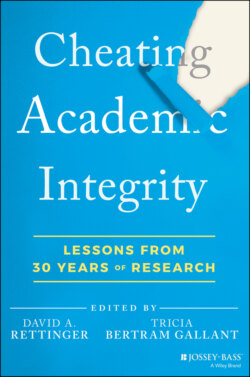Читать книгу Cheating Academic Integrity - Группа авторов - Страница 19
CONCLUSIONS ON TRENDS IN THE PREVALENCE OF PLAGIARISM AND CHEATING: 1990–2020
ОглавлениеIn this chapter, I have reviewed the best available evidence of trends in the prevalence of plagiarism and cheating over the 30 years from 1990–2020. Specifically, I aggregated and compared the results of three time‐lag studies of plagiarism and cheating, where each study surveyed similar student groups with similar questions, allowing for like‐with‐like comparisons. These studies indicated that students’ engagement in plagiarism and cheating has trended downward since at least 1994. Two main explanations were considered for the downward trend in cheating and plagiarism: 1) whether students are switching to commercial contract cheating to avoid “detectable” forms of plagiarism with the rise of text‐matching software and 2) whether interventions designed to reduce plagiarism and cheating are effective and, if so, what types?
On reviewing the best available like‐with‐like evidence, there was no indication of a clear trend in the prevalence of students’ engagement in commercial contract cheating in the last 30 years. This result is consistent both with crime displacement theory and findings that people are less likely to break moral rules that they consider to be more serious (Ariely, 2012). However, there is considerable evidence that educational interventions, combined with text‐matching software, were effective in reducing plagiarism and cheating. In addition, there was less clear evidence that honor codes may also be beneficial in lowering plagiarism and cheating. In sum, these results suggest that the work higher education institutions and staff have been doing to try to reduce plagiarism and cheating has had a positive effect. The general finding that educational interventions work to reduce academic misconduct accords with arguments that, in an educational setting, education is preferable to punishment to elicit future academic integrity behaviors of students (Bertram Gallant and Stephens, 2020).
It is important to point out that despite the downward trend in plagiarism and cheating, only one data‐point in Figure 1, Stiles et al.'s (2018) 2014 survey, shows less than 50 percent of students engaging in some form of academic misconduct. For all of the other time‐lag studies, most students engaged in some form of plagiarism or cheating at least once. Therefore, the finding that plagiarism and cheating is trending downward should not make higher education providers complacent. Every year, new students start their learning journey in colleges and universities, and every year these new students must be trained to understand and apply the expected standards of integrity in their work. In addition, it is worth considering emerging threats to academic integrity that may stop or reverse the downward trend.
